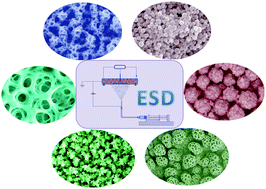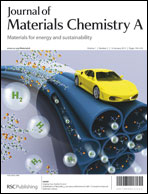Lithium ion batteries (LIBs) have been widely employed as the most popular energy source in today's portable electronics and are considered as one of the most promising energy strategies for electrical vehicle and plug-in hybrid electrical vehicle application, which has recently been under intense research and development. However, many crucial challenges need to be addressed to obtain high performance LIBs for further application. Recently, electrostatic spray deposition (ESD) technique has attracted much attention as a promising tool for electrode formation. The ESD is based on applying a high DC voltage to generate a high electrostatic force and accelerate atomized liquid droplets at the tip of a nozzle; the aerosol formed by charged droplets is sequentially deposited on a heated substrate to create an electrode for LIBs. This technique provides a simple but versatile strategy for generating single or multi-component materials with various type of morphologies, such as sponge-like, dense, porous and fractal, etc. In this review, an overview of the latest development and understanding of various anodes synthesized by the ESD technique in LIBs is briefly reviewed and discussed. Our attention is mainly focused on three different anode categories: (1) intercalation–de-intercalation anodes, such as graphite, Li4Ti5O12 and TiO2, etc.; (2) alloying–de-alloying anodes, such as Sn and SnO2, etc.; (3) conversion reaction anodes, such as NiO, Fe2O3, Co3O4, CoO, and Cu2O, etc. Moreover, our recent research outcome related to the ESD derived anodes for LIBs is highlighted.


 Please wait while we load your content...
Please wait while we load your content...